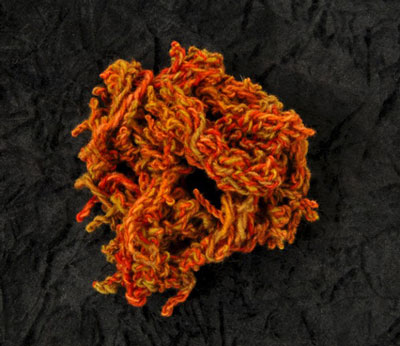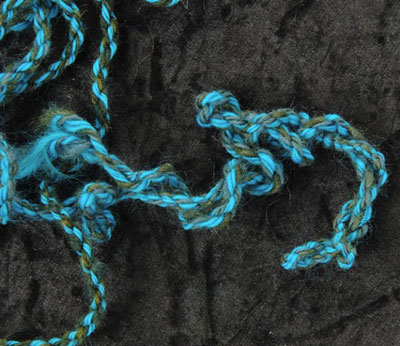When you are making cabled yarn, whether you are handspinning or using a wheel, you may run into problems. Keep in mind that the way that you spun the original single establishes the type of cable that you make. The original twist in the single determines how much twist you need to balance the ply twist — less twist in the single means that you need less to overtwist the plied yarn. The less twist in the yarn, the softer it is; the more twist, the stronger and firmer it is.
Your style of spinning also makes a difference. Worsted spinning produces a firmer, smoother, and more lustrous cable, and the surface shows the sharp definition of the cable twist. Conversely, woolen spinning produces a softer cable. It looks more like a plied yarn, but the fibers are better protected from wear and resist pilling, especially when you have fulled them.
Here are some common problems and solutions:
My yarns are twisted and tangled. Cabled yarns are a balancing act. In this case, an imbalance has caused the yarns to react with wild energy. When this happens to your cable, trace back the direction of all of the twists that you have made.

A standard cable is made by spinning a single to the right, plying it and re-plying it to the left, and cabling it quickly to the right. It is easy to spin once again to the left out of habit, so check carefully.
If you have made this common mistake, you can just re-cable it in the correct direction. This takes a bit more time, as the wrong twist has to come out before you can enter the correct twist.
I do not have enough twist in my plied yarn. Not enough twist is the most common cause of cabling problems.

You cannot put too much twist in a plied yarn that you are going to cable. To put in such a high twist goes against a spinner’s instinct for a balanced yarn, but you need this extreme twist to make a cable work.
Check and recheck to ensure that your plied yarn has enough twist to make a good cable. If it does not, then it is easy to run everything back through the wheel or the spindle in order to increase the twist.
When I am cabling, the plied yarn does not seem to feed on fast enough. Be careful to feed the plied yarns on as quickly as possible. You do not need to keep the yarns in order like you do when you are plying. If the wheel does not feel as if it is pulling on fast enough, check the tension. You may need to tighten the drive band on a double-drive wheel. On a single-drive band wheel, tighten the brake first, and then add a little tension on the drive band if it still needs to pull on faster. Check to make sure that you are using the largest whorl that you have.
On a hand spindle, cables need a heavy weight to pull on as quickly as possible. If your hand spindle is too light and it is not possible to add weight to it, then roll the yarns on your leg, toward your body (this creates a right-hand twist) and wind them into a ball as they form.

